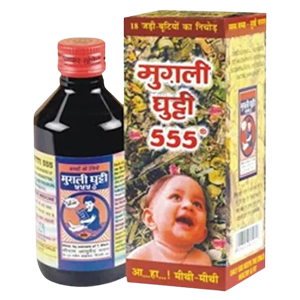| Ayurvedic Name |
Latin Name |
Ayurvedic Name |
Latin Name |
Harad(Large)

Ayurvedic Name : HARAD
(Large & Small)
Botanical Name : Terminalia chebula
The tree is highly esteemed by the Hindus, and a mythological origin has been assigned to it. It is said that when Indra was drinking nector in heaven, a drop of the fluid fell on the earth and produced Haritaki. It has also received the names of ‘pranada’ or life giver.’Suda’ or nectar, ‘Bhishakpriya’ or physicians’ favourite.–Action (karma); Mridu Virechak (mild laxative), Tridoshahar (cures all the three doshas). Agnideepak (enhances bioassimilation), Medhakar (enhances memory), Rasayan (rejuvenating, prevents aging and disease), Netra Hitkar (good for eyes), Laghu Paki (digest easily), Ayuvardhak (increases life span), Brinhan ( nourishes body tissues), used for all sorts of diseases.
Biopiracy and the Enclosure of the Commons: One name of this is Dhatu, meaning that which ‘nurses like a mother’. It is said that sometimes a mother can harm you but not the Haritaki you have taken. It is good Rasayam (rejuvenating). In Ayurveda, it is being used for all immuno-deficiencies since time immemorial.Haritaki is a Gentle laxative- Haritaki is the best single herb for generally controlling Vata, and is considered by some to be the single most important Ayurvedic herb. Widely used in Tibetan medicine, It is called the “king of herbs” there. Since Vata promotes constipation, the gentle laxative qualities of haritaki are perfect for balancing that dosha.It nourishes the brain and nerves. It is strongly astringent, contracting tissues, and is therefore used for various ulcers, prolapses, and fluid discharges. In Ayurveda, haritaki is called “the mother” and is thought to increase mental/spiritual awareness.
|
|
Terminalia Chebula |
Harad (Small)

Ayurvedic Name : HARAD
(Large & Small)
Botanical Name : Terminalia chebula
The tree is highly esteemed by the Hindus, and a mythological origin has been assigned to it. It is said that when Indra was drinking nector in heaven, a drop of the fluid fell on the earth and produced Haritaki. It has also received the names of ‘pranada’ or life giver.’Suda’ or nectar, ‘Bhishakpriya’ or physicians’ favourite.–Action (karma); Mridu Virechak (mild laxative), Tridoshahar (cures all the three doshas). Agnideepak (enhances bioassimilation), Medhakar (enhances memory), Rasayan (rejuvenating, prevents aging and disease), Netra Hitkar (good for eyes), Laghu Paki (digest easily), Ayuvardhak (increases life span), Brinhan ( nourishes body tissues), used for all sorts of diseases.
Biopiracy and the Enclosure of the Commons: One name of this is Dhatu, meaning that which ‘nurses like a mother’. It is said that sometimes a mother can harm you but not the Haritaki you have taken. It is good Rasayam (rejuvenating). In Ayurveda, it is being used for all immuno-deficiencies since time immemorial.Haritaki is a Gentle laxative- Haritaki is the best single herb for generally controlling Vata, and is considered by some to be the single most important Ayurvedic herb. Widely used in Tibetan medicine, It is called the “king of herbs” there. Since Vata promotes constipation, the gentle laxative qualities of haritaki are perfect for balancing that dosha.It nourishes the brain and nerves. It is strongly astringent, contracting tissues, and is therefore used for various ulcers, prolapses, and fluid discharges. In Ayurveda, haritaki is called “the mother” and is thought to increase mental/spiritual awareness.
|
|
Terminalia Chebula |
Ajwain

Ayurvedic Name : AJWAIN
Botanical Name : Carum Copticum
Ayurveda says that ajwain promotes degestion, alleviates gas, promotes kidney function and generally benefits the nerves. It is also considered to benefit the respiratory system, and to promote kidney function.It is considered to be powerfully detoxifying. Ajwain has relatively high calcium and iron content.
|
|
Carum Copticum |
Bahera

Ayurvedic Name : BAHERA
Botanical Name : Terminalia Belerica
Ayurveda recognizes the utility of this herb for the treatment of ailments such as: nausea, cold vomiting, cough, bronchitis, catarrh, chronic diarrhoea, dysentery, eye disorders, laryngitis, headache, homorrhoids, parasites, stones, kapha digestive disorders, urinary tract stones, liver disorders, G.I. tract diseases, poor appetite. This herb is used as a brain and stomach tonic. It is part of the triphala formula in ayurveda.
|
|
Terminalia Belerica |
Nisot

Ayurvedic Name : NISOT
Botanical Name : Operculina Turpethum
DIRECTIONS FOR USE : The laxative action has been attributed to the a-turpethin auckp-turpethin content of the plant. In constipation, it is an effective laxative. It is used in periodic fevers. In the treatment of anaemia accompanied by splenomegaly, it is used along with other therapy. It is also used to relieve flatulence and colic. In the treatment of obesity, it is used to decrease fat.
|
|
Operculina Turpethum |
Mulethi

Ayurvedic Name : MULETHI
Botanical Name : Glycyrrhiza Glabra
Licorice has a long and honorable history in the service of mankind. Licorice is a very sweet, moist, soothing herb that detoxifies and protects the liver and is also powerfully anti- inflammatory, being used in conditions as varied as arthritis and mouth ulcers.The root is alterative, antispasmodic, demulcent, diuretic, emollient, expectorant, laxative, moderately pectoral and tonic is much used in cough medicines. It is used In the treatment of asthma, bronchitis, coughs, peptic ulcer, arthritis allergic complaints.
|
|
Glycyrrhiza Glabra |
Saunf

Ayurvedic Name : SAUNF
Botanical Name : Foeniculum vulgare
Ayurveda says that fennel increases digestive fire without aggravating pitta. Fennel is a cooling spice that calms the nerves and promotes mental alertness. Fennel contains creosol and alpha-pinene, substances that loosen lung mucus and help clear the chest benefiting asthma.
|
|
Foeniculum Vulgare |
Baykhumba

Ayurvedic Name : BAYKHUMBA
Botanical Name : Careya Arborea
Local Names: Kumbi (Oriya), Albi (Gouda), Kanbela (Santal), Kumkum (Kolha), Padmachekar (Juang), Plant Parts Used: Root / Bark / Flower / Fruit.
This used to cure Abdominal pain,Body pain,Cold / Fever, Liquid purging,Cuts/Wounds,Myalgia etc.
|
|
Careya Arborea |
Makoh

Ayurvedic Name : MAKOH
Botanical Name : Solanum Nigrum
Properties and action according to Indigenous Medical System :Guna – Laghu, Snigdha,Rasa – Tikta Veerya – Anushna,Vipak – Katu
Action (karma)- Relieves hoarseness of voice, Shukrajanan (spermatogenic), Rasayan (rejuvenating), good for eyes and phelpful in Shoth ( inflammation), Kushta( skin diseases), Arsh (Piles), Jwar (fever), Prameh, Vaman (vomiting).
Use : For fevers, diarrhoea, eye diseases, hydrophobia, the berries are used. it is prescribed in cough and cold.Solanum nigrum is most effective for liver disorders such as chronic enlargement of the liver and associated symptons, e.g. haempotesis (blood from the mouth, mucoid stools and other skin manifestations.
|
|
Solanum Nigrum |
Bachcha

Name : BACHCHA
Botanical Name : Acorus calamus
Traditional/Medicinal Uses : It is used to treat a cough, as a carminative and as an infusion for cholic.
Traditional Ayurvedic Uses : Useful in all conditions of Vata excess or nervous exhaustion.
It is used for the treatment of chronic diarrhoea, dysentery, bronchial catarrh, intermittent fevers and glandular and abdominal tumours. Also employed for kidney and liver troubles, rheumatism and aczema. This is also the best rejuvenative, decongestant, emetic and also used in sinusitis.
It is also used as antibiotic insectcida.
|
|
Acorus Calamus |
Amaltas

Ayurvedic Name : AMALTAS
Botanical Name : Cassia Fistula
Action(karma): Pulp of fruit is Mridu Virechan (best of mild laxatives). Vednahar (pain reliever). Dah Shamak (relieves burning sensetion). Anulomic seeds are Vamak (emetic). Root is Tirva Virechak (strong laxative), Jwarhar (anti-pyretic).
Amaltas, as also its bark and roots are of definite medicinal value in the Ayurvedic as well as Unani systems of medication. The pulp is a good purgative and can be safely administered even to pregnant women. It also is good for cough, asthma, fever, etc.
Constipation : The pulp of the pod is a mild safe laxative and so can be given safely to infants, pregnant mothers and those persons possessing a delicate constitution.
Ayurvedic medicine recognizes the seed as antibilious, aperitif, carminative and laxative, the root for adenopathy, burning. concations, laprocy, skin disorder, cyphilic, and tubercular glands. The fruit for abdominal pain, constipation fever, heart disease, and laprosy. Unani use the leaves for inflammation, the flowers for a purgative, the fruit as antiinflammatory, anti pyretic, abortifacient, demulcent, purgative refrigerant good for chest complaints, eye ailmants, flu, heart and liver ailments. Seeds are considered emetic.
Nearly all parts of the tree have medicinal properties. The fruits are however, most important and are included in the Indian Pharmaceutical Codex.The pulp from the fruits, called cassia pulp, is a well-known laxative , and is used in the treatment of constipation. It can be safely taken even by children and expectant mothers. It is a mild, pleasant and safe purgative
|
|
Cassia Fistula |
Jeera

Ayurvedic Name : Jeera
Botanical Name : Cuminum Cyminum
Uses: Jeera or cumin finds use in curing indigestion, flatulence, chronic diarrhoea, vomiting, anorexia, hicups, cough, ulcers, general debitty and colic.
|
|
Cuminum Cyminum |
Marorphali

Ayurvedic Name : MARORPHALI
Botanical Name : Helicteres isora
Uses : For treatment of colic, scabies, diarrhoea, dysentery, gastropathy, diabetes & empypema.
It has astringent and anti-inflammatory activities, used as an antibacterial in several skin disorders.
|
|
Helicteres Isora |
Inder Jaun

Ayurvedic Name : INDERJAUN
Botanical Name : Wrightia Tinctoria
It has astringent and anti-inflammatory activities, used as an antibacterial in several skin disorders.
|
|
Wrightia Tinctoria |
Phool Gulab

Ayurvedic Name : PHOOL GULAB
Botanical Name : Rosa Centifolia
In Ayurvedic medicine, roses are considered cooling and a tonic for the mind. Constituents : Volatile oil, vitamins C, B, E, K, tannins. Rose oil contains some 300 chemical constituents. Application: Tincture it is traditionally used as an astringent for diarrhoea, to relieve colic, or as a component in a cough remedy
|
|
Rosa Centitolia |
Sanaya

Ayurvedic Name : SANAYA
Botanical Name : Cassia Angustifolia
Parts Used: Senna contains hydroxyanthracene glycosides known as sennosides. These glycosides stimulate colon activity and thus have a laxative effect. These glycosides also increase fluid secretion by the colon, with the effect of softening the stool and increasing its bulk. Together, these actions improve the quality and frequency of bowel movements.
Constipation : Senna is one of the most commonly used stimulant laxatives worldwide. Range : Senna is an Arabian name and the drug was first brought into use by the Arabian physician Serapion and Mesue, and Achiarius was the first of the greeks to notice it.
|
|
Cassia Angustifolia |
Bai Barang

Ayurvedic Name : BAI BARANG
Botanical Name : Embelia Ribes Burm
Action And Uses : Anthelmintic, alterative, astringent. carminative, stimulant and tonic. Used in colic, constipation, flatulence and worms.
History: Susruta describes the fruit as anthelmintic, alterative and tonic and recommends its use along with liqoriee root for the purpose of strengthening the body.
|
|
Embelia Ribes Burm |
Suhaga
![]()
Ayurvedic Name : SUHAGA
Botanical Name : Sodii Boras
It is very useful in Fever with cough, Bronchitis, Diarrhoea etc.
|
|
Sodii Boras |
|
|
























